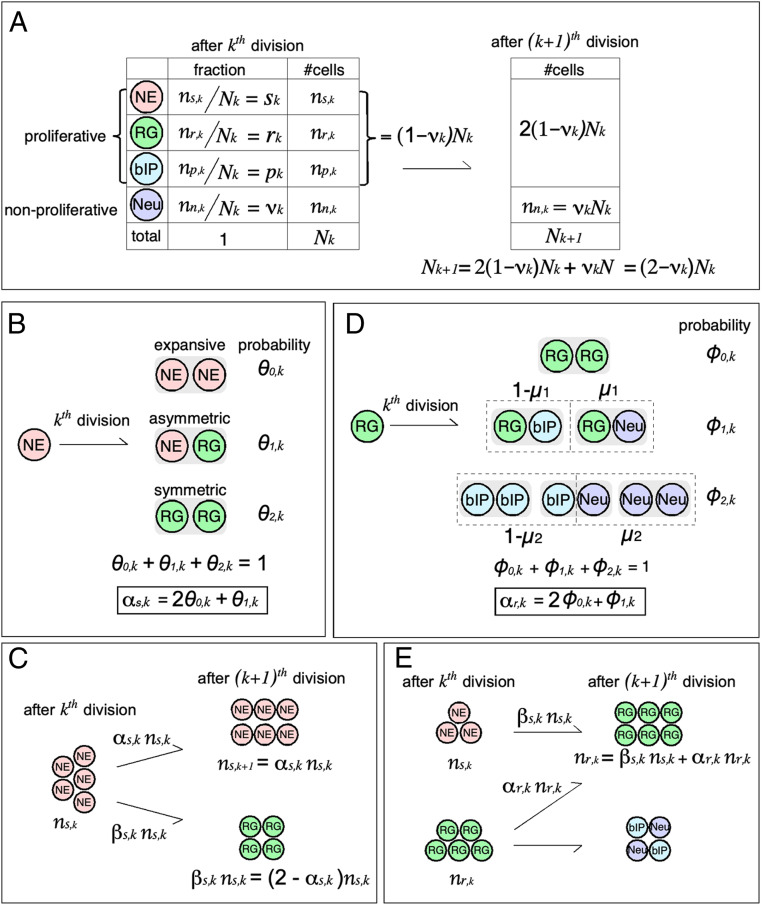Fig. 3.
Graphical summary of the cortical development model. (A) Demographic of developing cortical neurons. The equation relating and is repeatedly used in the present theory to convert the number of each cell type to its fraction, which was experimentally measured. NE, neuroepithelium cell; RG, radial glia; bIP, basal intermediate progenitor; Neu, neuron derived from local cortical progenitor. (B) Three cell division modes of NE. A goal of the present model is estimate the average number of NEs generated by one mother NE at a given developmental stage, termed as the expansion coefficient (). (C) Differentiation of NE at a cell division. is a quantity determining change in the number of NEs at each division. (D) Cell division mode of RG. An RG yields two cells, which can be RG, bIP, or neuron. is the probability that, when an RG generates one non-RG cell, it will be a neuron. is probability that, when an RG generates two non-RG cells, either one will be a neuron (i.e., is the expected number of neurons from one RG under this division mode). The expansion coefficient of RG () is defined in the same way as that of NE. (E) Origin of RGs. Because RGs are derived from NEs and RGs, the number of RGs after the th cell division () is the sum of those from NEs () and RGs (). Note that .

